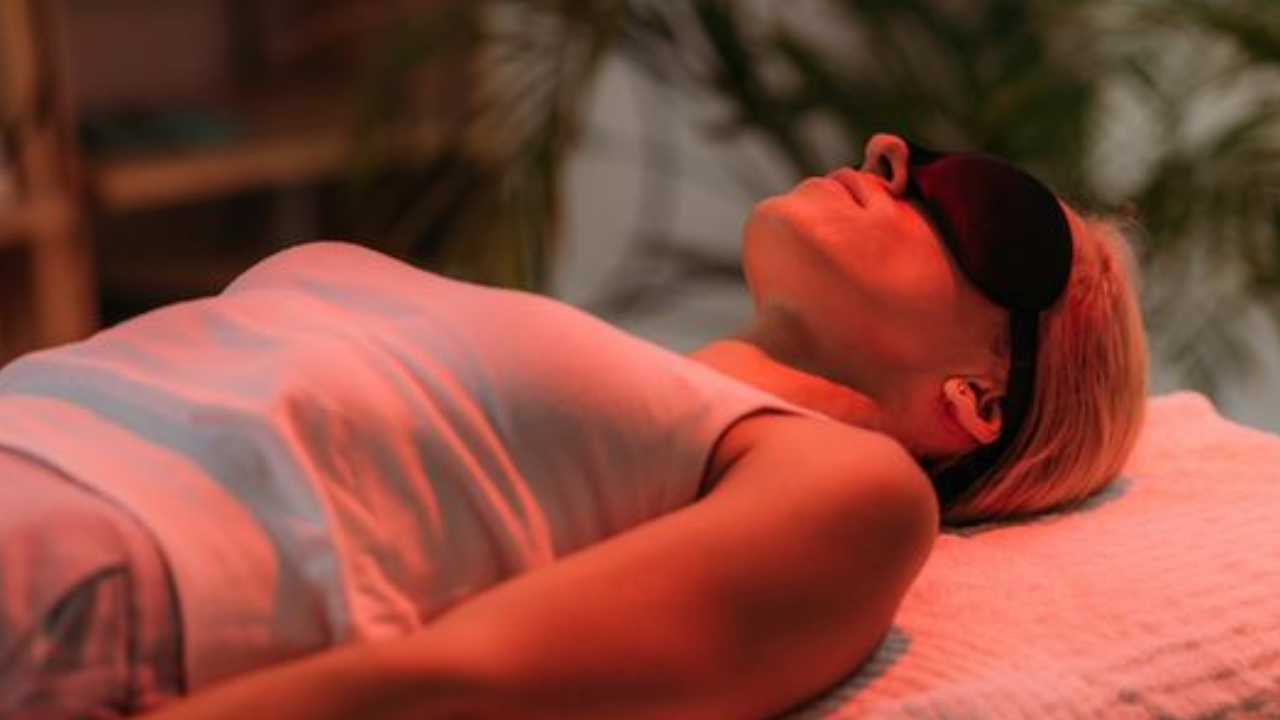LED skin treatments usually promote red and blue light therapy. Acne is frequently treated with blue LED light therapy. Red light therapy may be able to help reverse some of the skin’s photoaging indicators. To treat male and female disorders as well as wrinkles, redness, acne, scars, dark spots, and anti-aging, Domer LED Light Therapy machines mix 630nm red and 465nm blue light.
Increased cellular energy production, improved blood circulation, anti-inflammatory properties, collagen creation stimulation, pain alleviation, and possible neuroprotective effects are the outcomes of this. The red light therapy for hair growth depends on the underlying cause of hair loss, individual preferences, and the advice of healthcare professionals or dermatologists.
Is Red Light Therapy Safe For Hair?
It is thought to be safe for hair to get red light therapy. It is non-invasive since it works at low wavelengths, usually between 630 and 670 nanometers, and doesn’t generate heat. Without causing any harm, red light permeates the scalp and stimulates cellular activity.
It has demonstrated encouraging effects in boosting blood flow, stimulating hair follicles to produce more adenosine triphosphate (ATP), and encouraging hair growth. Additionally, it has FDA approval for specific types of hair loss. Before beginning any treatment, people should speak with a healthcare provider to be sure it is appropriate for their unique situation.
Red Light Therapy Affects the Production of ATP in Hair Follicles
Red light therapy can have an impact on the health and renewal of hair follicles by increasing ATP, which is sometimes referred to as the “energy currency” of cells and is essential to cellular functions.
Mitochondrial Enhancement and ATP Synthesis
Mitochondria are organelles within cells that play a pivotal role in power manufacturing. Purple mild therapy stimulates the respiration chain complexes inside the inner mitochondrial membrane, particularly complexes I, II, and IV. This stimulation ends in a growth inside the electron delivery chain interest and, consequently, complements the manufacturing of ATP.
Studies Evidence
Several studies support the idea that crimson light remedy undoubtedly affects ATP manufacturing in numerous cellular types, inclusive of the ones present in hair follicles. A take look published in the “magazine of Photochemistry and Photobiology” verified that purple light exposure elevated ATP synthesis in rat primary cortical neurons, imparting early proof of the remedy’s impact on cell strength dynamics.
Hair Follicle Reaction
Hair follicles are dynamic structures that undergo cycles of increase, regression, and rest. Anagen is the increase phase, catagen is the regression section, and telegenic is the resting section. Red light remedy has been proven to increase the antigen section, selling hair increase and preventing premature access into the catagen segment.
The enhancement of ATP production is especially applicable at some point in the anagen phase whilst the energy needs of actively dividing cells within the hair follicle are at their peak. By way of presenting a lift to ATP synthesis, red light remedy guarantees that the electricity desires of hair follicles are met, facilitating robust growth and upkeep.
Influence on Stem Cells
Stem cells in the hair follicle bulge place play an essential function in hair regeneration. Those cells are accountable for producing new hair follicles and replenishing existing ones. Red light remedy has been tested to stimulate the proliferation of stem cells, improving their regenerative ability. This stimulation is carefully tied to the multiplied ATP manufacturing found with crimson light publicity.
Progressed Blood float and Oxygenation
Another manner in wherein red mild therapy contributes to ATP production in hair follicles is by way of improving blood flow and oxygenation. Extended blood circulation guarantees the transport of oxygen and vitamins to the cells, supporting their metabolic activities, which include ATP synthesis. With the aid of improving vascular characteristics, red light remedy creates an environment conducive to the highest quality cellular electricity manufacturing.
Combating Oxidative Pressure
Oxidative stress, characterized by an imbalance among reactive oxygen species (ROS) and antioxidant defenses, can negatively impact cell characteristics, including ATP manufacturing. Red mild therapy has been proven to mitigate oxidative stress using promoting the interest of antioxidant enzymes. This discount in oxidative pressure contributes to surroundings wherein ATP synthesis can occur more successfully.
Conclusion
Red light therapy has the potential to be a therapeutic strategy for hair growth promotion because of its effect on ATP synthesis in hair follicles. Red light therapy promotes robust ATP generation by boosting mitochondrial activity, promoting stem cell proliferation, improving blood flow, and battling oxidative stress.
